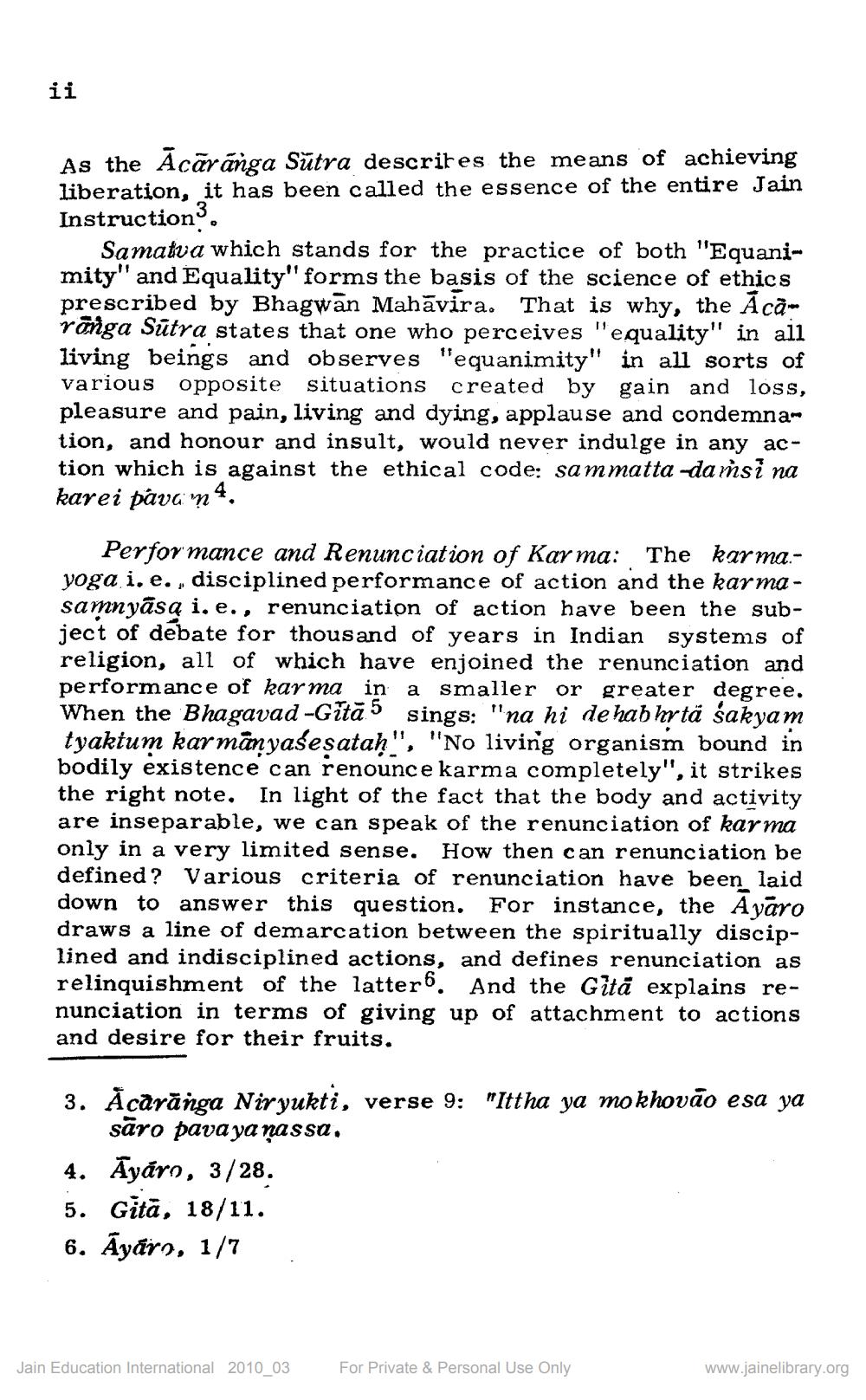________________
ii
As the Acaranga Sutra describes the means of achieving liberation, it has been called the essence of the entire Jain Instruction3.
Samatva which stands for the practice of both "Equanimity" and Equality" forms the basis of the science of ethics prescribed by Bhagwan Mahavira. That is why, the Acaranga Sutra states that one who perceives "equality" in all living beings and observes "equanimity" in all sorts of various opposite situations created by gain and loss, pleasure and pain, living and dying, applause and condemnation, and honour and insult, would never indulge in any action which is against the ethical code: sammatta-damsi na karei pāva na.
Performance and Renunciation of Karma: The karma.yoga i. e. disciplined performance of action and the karmasammyāsa i. e., renunciation of action have been the subject of debate for thousand of years in Indian systems of religion, all of which have enjoined the renunciation and performance of karma in a smaller or greater degree. When the Bhagavad-Gita 5 sings: "na hi de habhrta sakyam tyaktum karmanyaseṣataḥ", "No living organism bound in bodily existence can renounce karma completely", it strikes the right note. In light of the fact that the body and activity are inseparable, we can speak of the renunciation of karma only in a very limited sense. How then can renunciation be defined? Various criteria of renunciation have been laid down to answer this question. For instance, the Ayaro draws a line of demarcation between the spiritually disciplined and indisciplined actions, and defines renunciation as relinquishment of the latter6. And the Gita explains renunciation in terms of giving up of attachment to actions and desire for their fruits.
3. Acārānga Niryukti, verse 9: "Ittha ya mokhovão esa ya saro pava yanassa.
4. Ayarn, 3/28.
5. Gita, 18/11. 6. Ayaro, 1/7
Jain Education International 2010_03
For Private & Personal Use Only
www.jainelibrary.org




